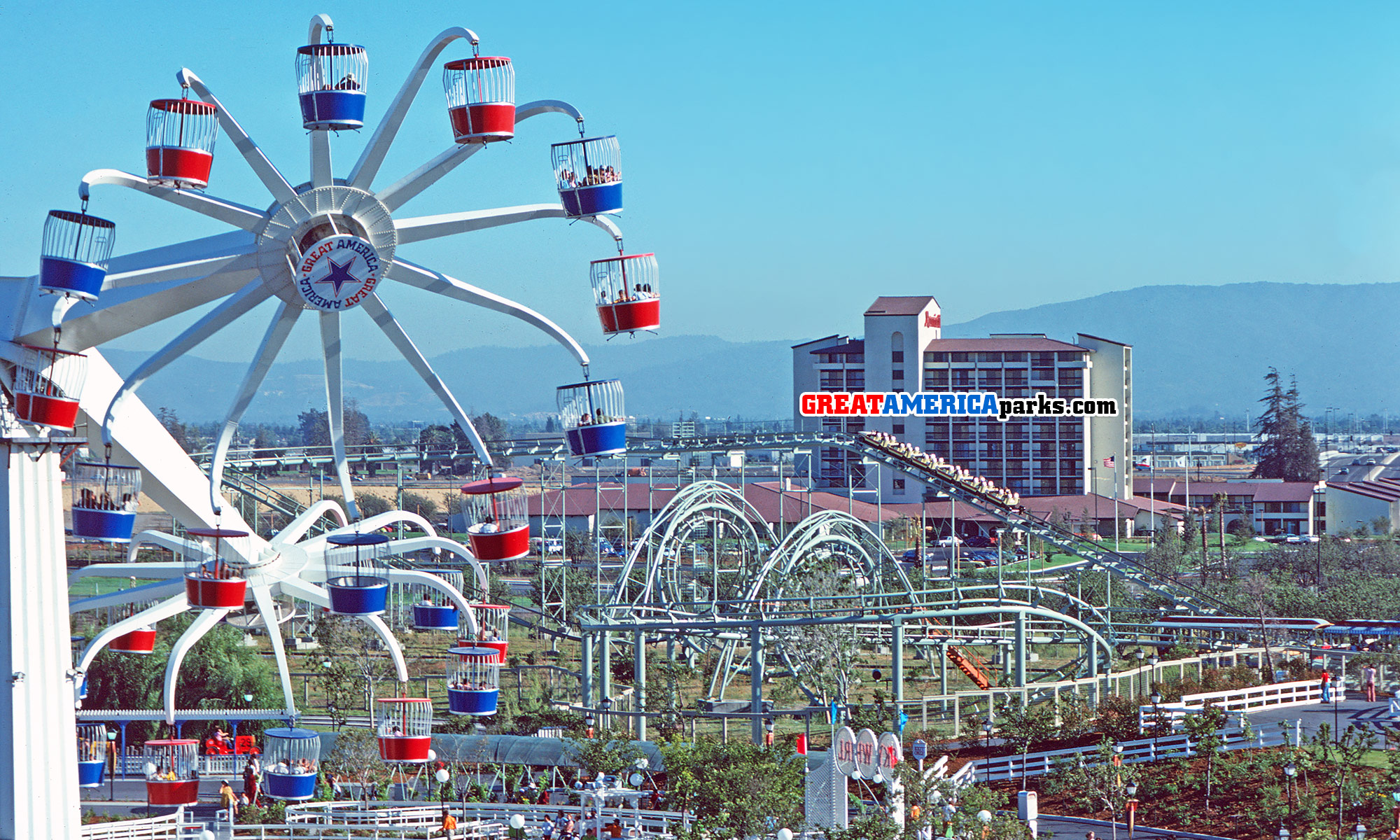Gurnee, Illinois
COASTER FEVER: A CASE HISTORY
The current epidemic of “coaster fever” began some 400 years ago with a milder outbreak in Eastern Europe. In the 17th-century Russian sport of ice sliding, two courageous riders and their experienced guide raced a two-foot sled down a 70-foot incline, constructed of a wood framework. The French adapted the ice slide to the milder Parisian climate by replacing the sled runners with wheels while retaining the wooden structure. This new recreational attraction debuted at a public garden in the Ternes’ quarter of Paris in 1804; and, in keeping with its Eastern European heritage, it was named the Russian Mountains.
More than 65 years later, an American variation of the Russian Mountains appeared, but these Artificial Coasting Courses, as they were called, were equipped with wide, closely-spaced rollers (similar to modern conveyor machines) that provided the track for sleds. The resulting name “roller coaster” has endured, even after the disappearance of coasting courses in 1884.
THE UPHILL CLIMB
American inventor LaMarcus Adna Thompson refined the French version of the Russian Mountains in 1884 by placing the wheeled cars on an undulated track. Cars on Thompson’s invention, the Switchback Railway at New York’s Coney Island, raced downhill at the breakneck speed of six miles per hour and stopped at the base of the hill. Ride attendants pushed the cars (minus passengers) up a second incline; the riders climbed in again and sailed back for a return trip.
Charles Alcoke, of Hamilton, Ohio, solved the “switchback” problem later in 1884 when he designed an oval track for Coney Island that returned passengers to their starting point. But since the Alcoke invention ws geared more toward quiet pleasure than screaming thrills, its passengers sat sideways for scenic viewing while they gently glided up and down over a series of mild dips and valleys.
Finally, in 1885, Phillip Hinckle, of San Francisco, California, turned things around by twisting passenger seats to face forward and by pulling cars uphill with a power-operated chain elevator.
With the combination of the inventions and refinements of 1884-85, the initial outbreak of American coaster fever began to spread.
THE RACE IS ON!
From the turn of the century through the Roaring Twenties, the number of roller coasters and their variations grew as fast as the height and speed of the new thrill machines. Whereas LaMarcus Thompson’s Switchback Railway (1884) reached a top speed of six miles per hour, the Bobs at Manchester, England’s Belle Vue Zoo Park (1929) raced its riders along at a thunderous 61 miles per hour.
The coaster builders of this golden era simply were not satisfied with the fastest ride. They reached for the sky and built towering wooden pinnacles 100 feet tall, sometimes even higher. They added hidden twists and mind-bending turns. They plunged their riders into darkness and nearly dropped them into a waiting lagoon. They gave their rides names of space, speed, and light — Cyclone, Blue Streak, Flying Turns, and Whirlwind. And when they finished, more than 1,500 “scream machines” were luring thrillseekers all over the world to climb aboard.
But, the furious building pace of the 1920s screeched to a sudden halt in the 1930s. Victims of the Depression, the elements, and the wrecker’s ball, the once-monumental roller coaster population dwindled from 1,500 to less than 200 by 1960.
BIGGER AND BETTER THAN EVER!
Since the introduction of theme parks in the late 1950s, coaster fever has resurged to epidemic proportions throughout the country. During the 1960s, some of the nation’s theme parks introduced and updated version of the famous Coney Island Scenic Railway (circa 1885) with tubular steel tracks instead of a wooden framework. The steel construction resulted in a smoother, more silent ride; it also enabled designers to build spirals and turns not feasible with a wooden structure. The final creation was the looping roller coaster.
Two styles of looping steel coasters emerged in the mid-1970s: the shuttle-loop style that flips its riders vertically, like the Tidal Wave at Marriott’s Great America; and the barrel-roll loop, which twists riders upside down. Great America’s Demon features barrel-roll AND vertical loops, representing a further step in the development of the steel coaster.
Even with the steel coaster’s sudden popularity, the hands-down (or in this case, “hands up”) favorite style remains the classic wooden roller coaster with its faster and noisier ride, which coaster fanatics believe enhances the challenge.
The great return of the “woodies” was led by coaster designer John Allen, who created five mammoth new wooden roller coasters between 1972 and 1976, each bigger and better than its predecessor.
Marriott’s Great America continues to spread the coaster fever phenomenon with the introduction of the world’s largest double-racing wooden roller coaster, The American Eagle, premiering this May.
1/81

